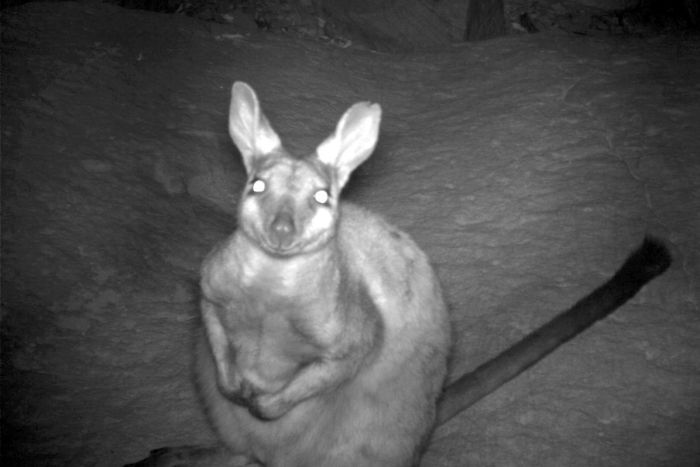Bright future for endangered rock wallabies

THANKS TO SUCCESSFUL relocation efforts earlier this year, the endangered black-flanked rock wallaby could once again become a common site in Kalbarri National Park in Western Australia.
Kalbarri, which is located 500km north of Perth, was once home to one of the largest populations of black-flanked rock wallabies. Over the past 90 years, however, feral pests and predators have driven rock wallaby numbers dangerously low. The feral animals primarily responsible are red foxes, which prey on joeys, and feral goats, which compete with wallabies for food and shelter.
By the time the Department of Parks and Wildlife (DPAW) began baiting for foxes in 1996 and goat culling in 2006, the rock wallaby population had become so low that it could not recover on its own.
For 17 years, rock wallabies were thought to be extinct in the park.
That is, until September 2015, when a group of rock climbers made a rare discovery: they captured images of two black-flanked rock wallabies and their joey in a remote gorge of the national park.
This year, Australian conservationists have launched a mission to protect these native animals and grow their populations to a self-sustaining level.
In May 2016, with help from WWF-Australia, 23 black-flanked rock wallabies were brought to Kalbarri from thriving populations in Nangeen Hill and Mount Caroline. The recovery team in charge chose Kalbarri because it is the biggest area of potential habitat for these rock wallabies.
“Translocations always carry a level of risk but the indications to-date are very good,” said Anthony Desmond, from DPAW. “Only one of those wallabies has died so that’s a fairly good indication of success.”
The recovery team has been monitoring the wallabies using collars and motion-sensitive cameras placed throughout the gorge. These cameras monitor wallaby conditions, pick up whether they have expanded to new habitats and give early warning for predators in the region.

The translocated wallabies appear to be doing well, and have been captured on motion sensing cameras. (Image: DPAW)
Currently, feral cats pose the greatest threat to rock wallabies and, in response, the recovery team has been testing the most effective regime of cat baiting. So far their efforts seems to be working.
“We are now six months down the track from the relocation and the wallabies we are seeing on the cameras are in good condition,” said Anthony. “We are even seeing a couple of joeys coming out this season.”
“Given half a chance, this new invigorated population will do well,” said Peter Mawson, an expert in threatened species conservation from the University of Western Australia, who is not involved in the Kalbarri translocation. “The reason people like Anthony can be as confident as they are is that all of the other re-introductions done involving this species have survived and in most cases flourished.”
Anthony said the next step is to foster a population that grows to a size where the survival of the species is assured.
“We will certainly be looking at further translocations so that these populations can grow effectively,” said Anthony. “For people to be able to go to the lookouts in Kalbarri and see rock wallabies would be very special.”
READ MORE:
- Rock wallabies airlifted to new home
- Relocated quolls thrive offshore
- Western quolls released into Flinders Ranges




